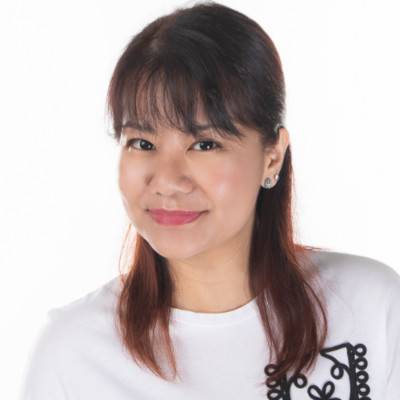Writing good AI art prompts can be a daunting task, but it can also be an enjoyable and rewarding experience when you achieve the output you want. While many of us have been fascinated by the mind-bending visuals that can be created with just a few words, getting the right words can be tricky. It takes awhile to learn how to craft the perfect AI art prompts to bring ideas to life.
In this article, we discuss how to write effective AI art prompts and 10 free reusable AI art templates to use.
Key Takeaways
- Craft Powerful Prompts: The better your descriptions, the better your AI art will be. Use clear details, artistic references, and emotional themes to guide the AI.
- Experiment and Refine: Don’t be afraid to play around with wording and see what the AI comes up with. Learn from each attempt and adjust your prompts for even better results.
- Join the AI Art Community: There’s a whole world of AI artists online! Share your creations, get inspired by others, and pick up new prompt-writing tips.
- Top AI Art Generators to Try: Unleash your creativity with popular AI art tools such as Midjourney, DALL-E 3, and more.
How to Improve Your AI Art Prompts
Improving your prompts for AI art is key to getting better results. Here are some quick tips to refine your prompts:
- Be Specific: Provide clear, detailed descriptions. Include specifics about style, color palette, mood, setting, and any key elements you want in the artwork.
- Use Artistic References: Mention well-known art styles, movements, or artists that align with your desired outcome. For example, you could reference a “pop art style” or “reminiscent of Art Deco”.
- Balance Detail and Flexibility: While specifics are good, too much detail can restrict the AI. Leave some room for creative interpretation.
- Experiment with Descriptive Language: Play around with adjectives and descriptive phrases. Words like “surreal”, “ethereal”, or “vibrant” can significantly alter the mood and style of the AI-generated art.
- Incorporate Emotional or Conceptual Themes: Add themes or emotions to your prompt, like “serenity”, “chaos”, “joy”, or “melancholy”.
- Sequential Refinement: Start with a broad prompt, then refine it in subsequent iterations based on the initial results you get.
- Learn from Art Prompt Examples: Look at prompts used by others to create successful AI art and learn how they structure them.
- Use Combinations Creatively: Combine different elements, styles, or themes in unique ways to see how the AI interprets them.
- Experiment with Art Jargon: If you’re familiar with artistic terminology, use it in your prompts to guide the AI more precisely.
- Iterate and Learn: AI art generation is often about trial and error. Learn from each attempt and adjust your prompts accordingly.
Different AI art tools might interpret prompts in varying ways, so it’s also about understanding the specific tool you’re using. If you’re using something like MidJourney, Stable Diffusion, and Stylar AI, take some time to play around with its features and see how it responds to different types of prompts. This exploration can be quite fun and a learning experience in itself!
Refining Your Prompts for Better Output
Here’s an example of how you can refine your prompts. Imagine you wish to create the photo of a cat, in the kitchen, knocking a glass of water off the table. Your prompts should have the following covered:
- Specify the format: Generate a <photograph>
- Describe the subject: Generate a photograph of <a cat>
- Add details: Generate a photograph of a cat <about to knock a glass off a table>
- Describe the style: Generate a <realistic> photograph of a cat about to knock a glass off a table
- Give additional details: Generate a realistic style photograph of a <ginger> cat about to knock a glass off a table <in the kitchen with the window in the background and sunlight streaming through>.
The first iteration could look like this:
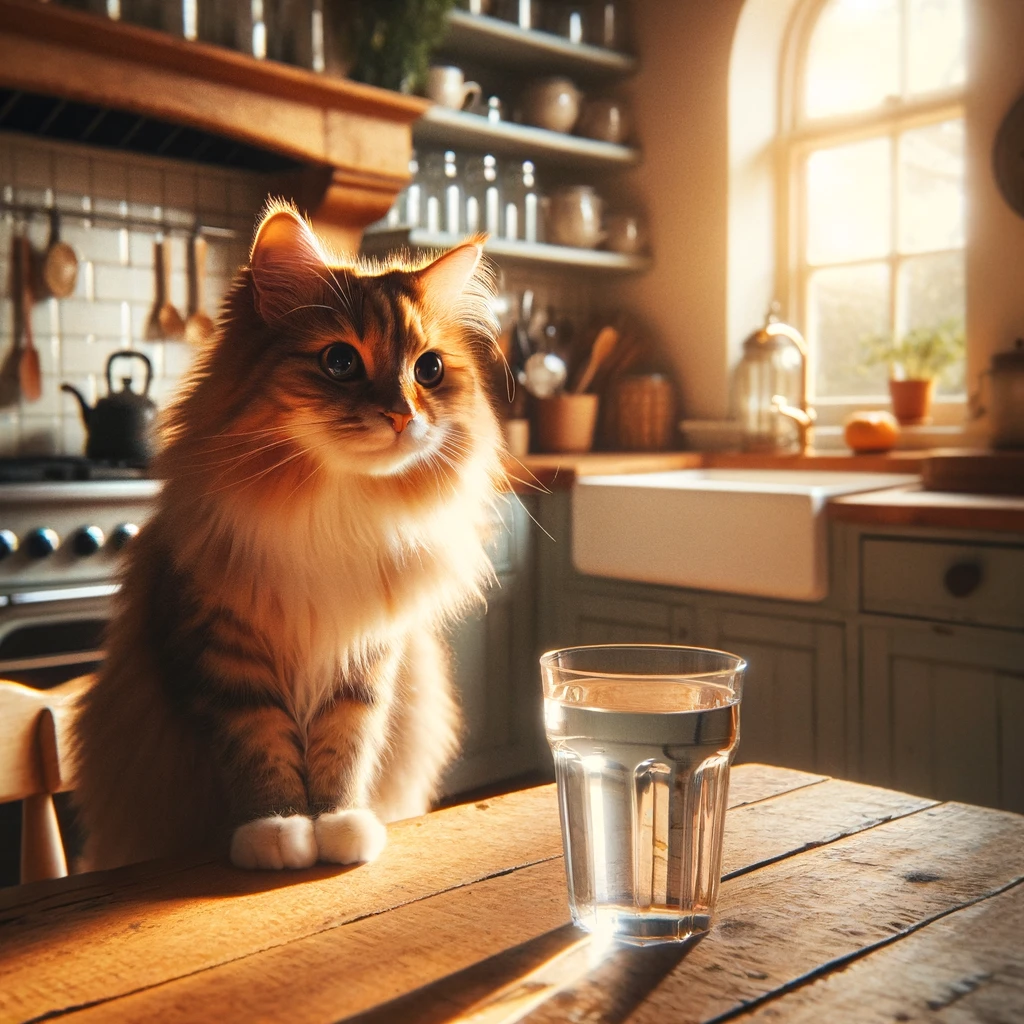
While a good output, the cat does not look like it’s about to knock the glass off the table. This is where you refine the prompt again by adding more specific details and edits to the image, such as:
“Tilt the cat’s head and make it reach for the glass to knock it off the table.” And your refined output should be closer to the intent, like this:
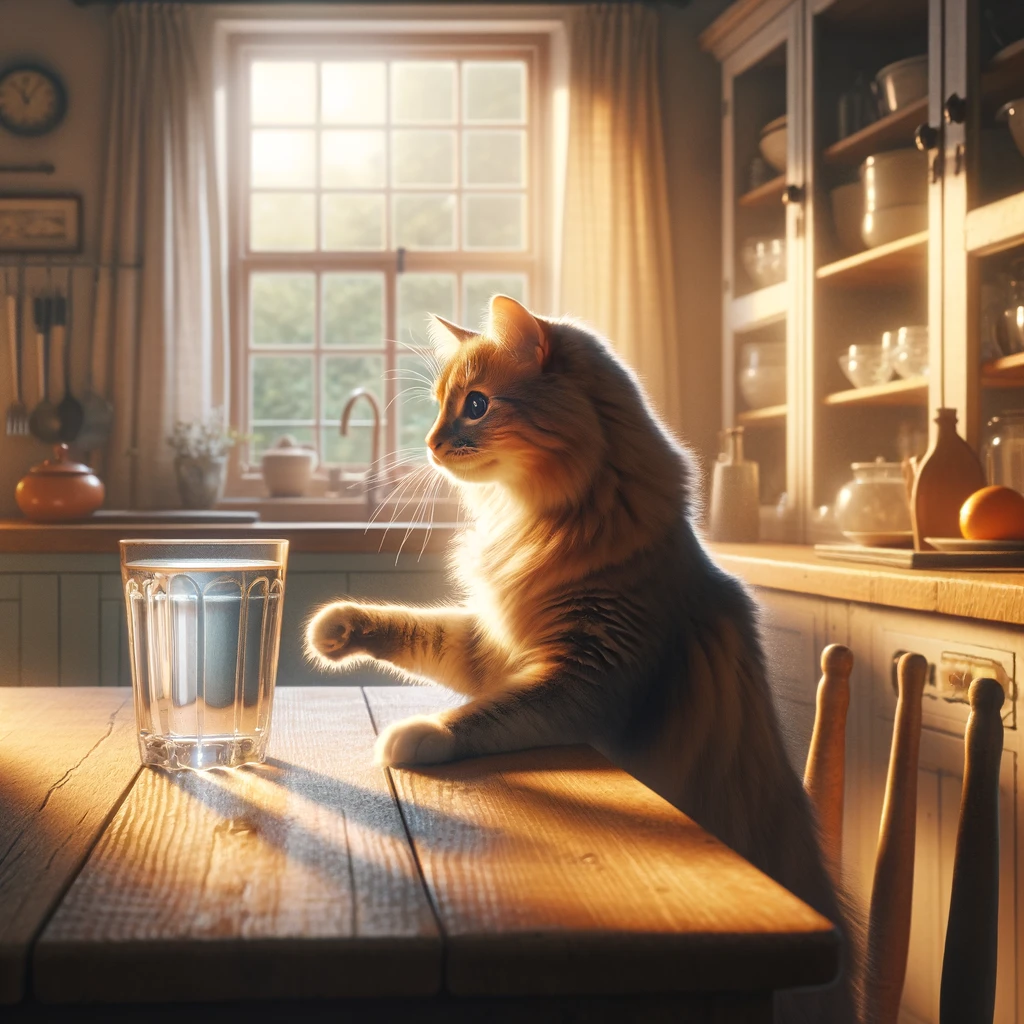
Refining your prompts is crucial for obtaining the desired output, especially in creative tasks. The example provided illustrates the importance of being specific and clear. By detailing the scene, the action, and any additional elements you wish to include, you guide the creative process more effectively. This level of detail not only ensures a closer match to your vision but also enhances the quality and relevance of the output.
10 AI Art Prompts You Can Use
![Create a futuristic [digital, oil on canvas, watercolor, etc.] art print depicting [shapes, patterns, textures, colors, etc.] in a [landscape, world, concept, etc.] where technology merges with [nature, animals, buildings etc].](https://addlly.ai/wp-content/uploads/2024/04/Create-a-futuristic-digital-oil-on-canvas-watercolor-etc.-art-print-depicting-shapes-patterns-textures-colors-etc.-in-a-landscape-world-concept-etc.-where-technology-merges-with-nature-animals-buildings-etc.png)
1. Technology:
Template: Create a futuristic [digital, oil on canvas, watercolor, etc.] art print depicting [shapes, patterns, textures, colors, etc.] in a [landscape, world, concept, etc.] where technology merges with [nature, animals, buildings etc].
Example Prompt: Create a futuristic digital art print depicting organic shapes, and a mix of natural and neon colors, in a world where technology merges with nature.
2. Portraits:
Template: Create a portrait of a [adjective] [character type, actor/actress/ fictional/mythical figure] with [facial/physical details, clothing, accessories, etc]. Place them in a [scene, style, time period, fictional world, etc].
Example: Create a portrait of a forest fairy with white hair, blue eyes and clothing made out of leaves, wearing a silver crown. Place her by a lake in the forest.
3. Landscapes:
Template: Generate a [natural, ethereal, abstract, etc] looking [forest, underwater seascape, mountain, lake, etc.] landscape capturing [sunset, dawn, season, etc]. Include [plants, animals objects, etc] with [sunlight, moonlight, shadows, etc.] filtering through the [water, sky, land, etc].
Example: Generate an ethereal looking forest landscape capturing the beauty of the sunset. Include tall trees, and purple sunset colors, with soft focus light filtering through the clouds.
4. Objects and Still Life:
Template: Create a [photograph, image, painting] of [objects] in the style of [painting, artist, treatment].
Example: Create a still-life painting of a bunch of fruits in a bowl in the artistic painting style of Monet.
5. Scenes:
![Generate a [new age, cosmic, futuristic, etc] scene that depicts [otherworldly, mechanical, etc] elements in [mood, colours, etc.] that represents [event, moment, etc]](https://addlly.ai/wp-content/uploads/2024/04/Generate-a-new-age-cosmic-futuristic-etc-scene-that-depicts-otherworldly-mechanical-etc-elements-in-mood-colours-etc.-that-represents-event-moment-etc-1024x585.png)
Template: Generate a [new age, cosmic, futuristic, etc] scene that depicts [otherworldly, mechanical, etc] elements in [mood, colours, etc.] that represents [event, moment, etc].
Example: Generate a new age, cosmic looking scene that depicts otherworldly elements in bright explosive colours that could represent the Big Bang.
6. Fantasy and Mythology:
Template: Illustrate [a scene, character, mythological animal, etc] from [movie, book, game, etc] and show them in [age, scenario, background, etc].
Example: Illustrate Harry Potter from Gryffindor and show him winning the Quidditch cup at Hogwarts.
7. Architecture:
Template: Create an impressive photo featuring [types of building or architectural style] with structures such as [key architectural elements and details] set against a [landscape, backdrop], portrayed in [neoclassical, abstract, etc.] style.
Example: Create an impressive photo featuring a monolithic building with structures such as towers and turrets set against a dark evening landscape, portrayed in a neoclassical style.
8. Infographics and Typography:
![Recreate a [quote, lyric, name, etc] in typography style art arranged in [composition shapes] with creative use of [fonts, sizes, colors, styles, etc.].](https://addlly.ai/wp-content/uploads/2024/04/Recreate-a-quote-lyric-name-etc-in-typography-style-art-arranged-in-composition-shapes-with-creative-use-of-fonts-sizes-colors-styles-etc-1024x585.png)
Template: Recreate a [quote, lyric, name, etc] in typography style art arranged in [composition shapes] with creative use of [fonts, sizes, colors, styles, etc.].
Example: Recreate the Rolling Stones in typography poster style arranged in 2 lines with creative use of black, grey, red and yellow.
*Note: It is interesting to note that with typography, AI art generators do not get the spelling or letters exactly right, as illustrated above.
9. Emotions:
Template: Create a visualization representing [feeling, emotion]. Use [colors, shapes, etc] to convey [feeling emotion].
Example: Create a visualization representing sorrow. Use darker, moodier colors, such as black, grey and dark blue, in shapes that convey sorrow and sadness.
10. Science and Space:
Template: Generate an image featuring [galaxies, planets, stars, etc.] in the vastness of space. Include [celestial bodies, rocket, spaceman, etc.] to create a [cosmic, modern, science, etc.] scene.
Example: Generate an image featuring Saturn in the vastness of space. Include other celestial bodies and stars to create a galaxy scene.
Top AI Art Generator Tools
While there are many AI art generators available today, these are the top three tools that can turn your AI prompts into stunning visuals:
1. MidJourney

MidJourney is a well-known text-to-image creation program and one of the most popular Stable Diffusion alternatives. It creates pictures using Discord talks, allowing for quick AI art production without the need for coding skills or expertise.
MidJourney’s Key features
- An integrated bot provides tips to help users generate digital artwork within minutes
- Its existence within Discord offers users a strong community to engage with and learn from
- A Favorites Gallery helps you track and save your best generated images
- The pricing tiers enable users to create unlimited images for a single price
2. Stable Difussion XL (SDXL)
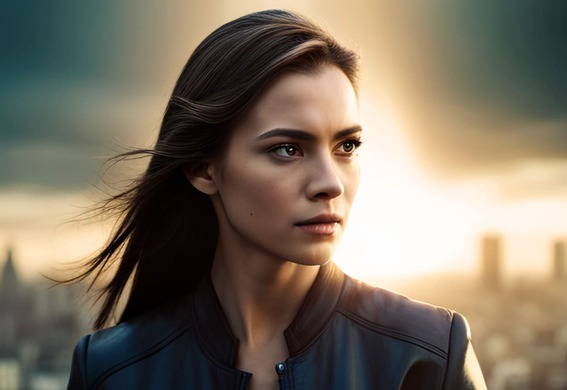
Stable Diffusion XL (SDXL) is a cutting-edge AI art image generator that utilizes diffusion models to produce high-quality and visually captivating artworks, developed on the foundations pioneered by OpenAI.
SDXL’s Key Features:
- Stability and Consistency: As the name suggests, stability is a key feature of SDXL. The model excels in producing consistent generated images, with minimal artifacts or inconsistencies, resulting in aesthetically pleasing outputs.
- Flexibility and Control: SDXL provides users with a high degree of flexibility and control over the generated images. Through various parameters and settings, users can manipulate the style, composition, and other aspects of the artwork to suit their preferences and creative vision.
- Scalability: SDXL is designed to scale efficiently, enabling the generation of high-resolution photorealistic images with intricate details. This scalability is essential for accommodating the diverse needs of artists, designers, and creators across different platforms and applications.
3. Dall E-3

DALL·E-3 represents a significant milestone in the field of AI image generation, offering unparalleled capabilities and opportunities for creative expression and innovation.
One of the most remarkable aspects of DALL·E-3 is its ability to understand and interpret nuanced textual descriptions, translating them into visually coherent and contextually relevant images.
Key features of DALL E-3:
- Efficiency and Automation: By automating the image generation process, DALL·E-3 streamlines workflows and reduces the need for manual intervention, saving time and resources for users across various industries.
- Creativity Unleashed: DALL·E-3 unlocks new avenues for creative expression by enabling users to generate custom images based on textual descriptions, fostering innovation and exploration in fields such as art, design, and storytelling.
- Versatility and Adaptability: With its ability to generate images across diverse styles and concepts, DALL·E-3 proves to be a versatile tool that can cater to a wide range of creative and practical needs, from visual design to content generation.
Looking for More than Just Images?
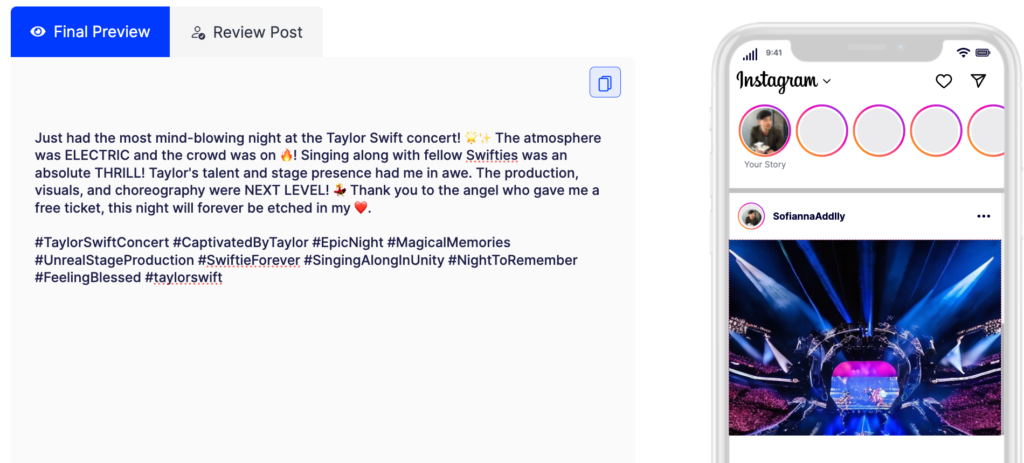
Addlly AI is the ultimate AI writing software designed specifically for content marketers. So why is it on this list of AI image generators? Because Addlly AI is changing the game by generating images tailored to your content, thus providing a significant advantage over other tools. You don’t have to give prompts to generate relevant images for your content. Addlly AI provides unique AI images to accompany your content – from blogs to social posts.
Using advanced generative AI technology, Addlly’s AI image generator saves content creators valuable time that would otherwise be spent searching for or creating images manually on other tools. Addlly can generate images in a matter of seconds, allowing content creators and marketers to focus more on crafting compelling written content.
Conclusion
The example prompts and tips to write better prompts provided here are to help kickstart your artistic journey with AI. By using art prompt templates and exploring AI art prompt generators,you can turn your ideas into stunning visuals in a few keystrokes.
Remember, the key is to experiment and refine. Try different words, reference famous art styles, and play with emotions in your prompts. Embrace the surprises AI art throws your way, and learn from each attempt to get closer to your vision. Tap into the community of AI artists out there by joining online forums to share your creations, get inspired by others, and pick up new prompt-crafting tricks.
But most importantly, have fun! AI art creation should be engaging and rewarding. Let your creativity run wild and see what magic you can create with the power of words and AI.
Recommend reads:
Author
-
As the seasoned Content Editor at Addlly.ai, my 15-year journey in editorial sharpens every piece of content to perfection. With a focus on clarity, brand voice alignment, and SEO enhancement, I ensure each publication meets the highest standards. My collaboration with writers is about elevating their work, leveraging insights from the marketing world to deliver content that truly resonates.
View all posts

![What is Few-Shot Prompting? [Complete Guide & Examples]](https://addlly.ai/wp-content/uploads/2024/07/What-is-Few-Shot-Prompting.png)
